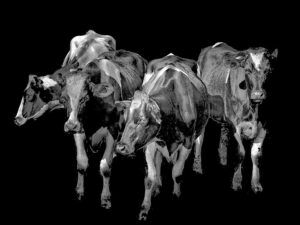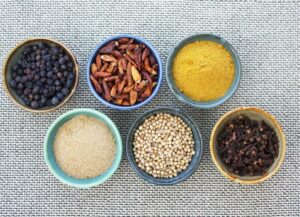Álvaro García
Protein is one of the most essential nutrients in the early life of a dairy calf, playing a significant role in growth, immune function, and future productivity. From the moment a calf is born, how and when protein is supplied can shape its development, influence feed efficiency, and determine its ability to reach full genetic potential. Unlike adult animals, calves go through drastic physiological changes in a brief period, starting with a liquid diet, developing a functional rumen, and eventually transitioning to forages and concentrates. Each of these stages presents a unique opportunity to fine-tune protein nutrition.
We now understand that nutrition does not just feed the calf’s body, it can also influence how its genes are expressed. Early-life feeding decisions can act like switches, turning certain genes on or off in ways that affect how nutrients are used, how the immune system develops, and how efficiently the animal grows. This growing field of knowledge, called nutrigenomics, helps us connect protein supply with long-term biological programming. Understanding the evolving needs of the calf, and how those needs interact with its genetic blueprint, is not only a matter of supporting growth but a long-term investment in the health and performance of the entire herd.
Protein and energy needs for preweaning growth
Feeding during the preweaning phase involves a balance between meeting their rapidly increasing energy demands and supplying sufficient high-quality protein to support lean tissue accretion, organ development, and immunocompetence. During this stage, their nutritional needs per unit of body weight are significantly higher than those of mature animals.
The updated NASEM (2021) guidelines refine maintenance energy estimations by adjusting for empty body weight (EBW), which excludes the weight of gut fill and provides a more accurate baseline to calculate energy requirements. The following correction factors are applied based on diet type:
- Milk-fed calves: EBW = body weight × 0.94
- Mixed-fed calves (milk + starter): EBW = BW × 0.93
- Weaned calves: EBW = BW × 0.85
Using these corrected EBWs, maintenance energy needs are estimated as:
- Net energy for maintenance (NEₘ) = 0.097 Mcal/kg EBW^0.75
- Metabolizable energy for maintenance (MEₘ) = 0.138 Mcal/kg EBW^0.75
These values are slightly higher than those in NRC (2001), partly because they account for endogenous protein losses, such as sloughed epithelial proteins and immune-related secretions. The efficiency of converting dietary ME into net energy for maintenance is assumed to be 68%.
As calves grow faster, both their dry matter intake (DMI) and nutrient concentration need to rise to sustain energy and protein requirements. Table 1 outlines the estimated needs for a 50 kg calf at varying growth rates:
Table 1. Energy and Protein Requirements for a 50 kg Dairy Calf at Varying Growths |
||||
ADG (kg/d) |
DMI (kg/d) |
ME (Mcal/d) |
CP (g/d) |
CP (% DM) |
0.20 |
0.56 |
2.56 |
102 |
18.2 |
0.40 |
0.72 |
3.29 |
156 |
21.6 |
0.60 |
0.89 |
4.05 |
209 |
23.7 |
0.80 |
1.06 |
4.85 |
262 |
24.7 |
1.00 |
1.24 |
5.66 |
315 |
25.5 |
ADG: Average Daily Gain; DMI: Dry Matter Intake; ME: Metabolizable Energy; CP: Crude Protein; CP (% DM): Crude Protein as Percentage of Dry Matter. Based on calculations from the National Academies of Sciences, Engineering, and Medicine (NASEM), 2021 Nutrient Requirements of Dairy Cattle, 8th revised edition. |
||||
These figures show that the faster the growth rate, the higher the dietary CP concentration must be. This is due to the increasing proportion of lean tissue growth relative to fat accretion at higher ADGs, which demands a greater supply of amino acids.
Milk replacer strategies: balancing protein and energy for optimal growth
Milk replacers with 20–22% CP are enough for modest growth (e.g., 0.2–0.4 kg/d). However, for greater growth rates (≥0.8 kg/d), a milk replacer containing at least 26% CP is recommended to avoid protein deficiency and ensure proper muscle deposition (Wilms et al., 2022). In high-growth programs, energy also needs to be elevated to prevent excessive protein oxidation.
Recent research emphasizes the importance of the CP-to-ME ratio over simply feeding high levels of protein or energy independently. The most efficient growth, in terms of feed conversion and lean mass gain, occurs when the dietary CP:ME ratio is maintained between 51–55 g CP per Mcal of ME, regardless of whether calves are on a restricted or ad libitum milk replacer program (Hill et al., 2008a; Hill et al., 2009; Rauba et al., 2019). Lower ratios tend to result in slower growth and higher fat deposition, while higher ratios may increase nitrogen waste and reduce energy efficiency.
Nutrient partitioning during calf development
As calves grow and shift to solid feeds, how they use dietary nutrients changes significantly. During preweaning, energy from lactose and fat supports basic maintenance. If protein intake exceeds energy supply, excess amino acids are deaminated and excreted, reducing nitrogen efficiency (Gerrits, 2019; Amado et al., 2024a,b).
Once solid feed intake increases, and the rumen becomes functional, nutrient use shifts toward lean tissue growth. Organs like the liver and digestive tract expand rapidly, becoming major users of dietary protein, especially when supported by fermentable carbohydrates that fuel microbial protein synthesis (Meyer, 2005; Van Amburgh et al., 2019).
Feeding higher-protein milk replacer (16–25% CP) improves growth and feed efficiency, but only when paired with adequate energy (Blome et al., 2003). In postweaning calves, moderate-protein starters with sufficient fermentable carbohydrates enhance nitrogen retention by recycling urea for microbial protein (Berends et al., 2014, 2015).
Metabolic trials show that added protein (+PRO) promotes lean gain, up to 52% extra protein is retained as body protein when energy is adequate, while added fat or lactose primarily increases fat stores (Amado et al., 2024a,b). These results highlight the need to balance protein and energy throughout early development to avoid waste and support efficient growth (García, 2021).
Essential amino acids for growth and immunity
Before weaning, calves rely entirely on milk or milk replacer (MR) for amino acids, since their rumen is not yet functional. This makes the amino acid profile of the liquid diet critical. Lysine, methionine, and threonine are often the most limiting essential amino acids (EAAs) and supplementing them can improve ADG by up to 17% by enhancing protein use efficiency (Hill et al., 2008b; Castro et al., 2016).
While plant proteins like soy and wheat can reduce MR costs, their amino acid profiles differ from milk proteins and may contain antinutritional factors unless properly processed (Thornsberry et al., 2016; Ansia & Drackley, 2020).
We need to also keep in mind that EAAs support immunity. During stress or disease, amino acid demand rises. Supplementing EAAs improves growth, antibody production (IgG), and lowers stress hormone levels under immune challenges (Zubia et al., 2023).
Rumen development and protein utilization
Early in life, milk proteins are digested in the small intestine, with little fermentation occurring in the undeveloped rumen. By 3 to 4 weeks of age, solid feed intake stimulates the rapid development of the rumen. Microbial populations break down feed and produce microbial protein, soon becoming the calf’s primary source of metabolizable protein (MP). This shift is reflected in changing dietary protein contributions. In milk-fed calves, rumen-degradable protein (RDP) represents just ~10% of DMI, while rumen-undegradable protein (RUP) contributes ~6.6%. After weaning, RDP rises to nearly 80%, and RUP drops below 3% (NASEM, 2021). At the same time, the efficiency of converting crude protein into absorbable MP declines, from about 0.95 with milk, to 0.75 with mixed diets, and 0.70 with solid feed, due to energy costs of microbial synthesis.
During the weaning transition, rumen volume nearly doubles, body weight increases by over 40%, and microbial nitrogen flow to the abomasum becomes the main source of absorbable amino acids. If protein and energy are not adjusted appropriately during this shift, calves may fall short on MP despite adequate CP intake.
Protein is a critical nutrient in the early life of dairy calves, directly influencing growth, immune development, and long-term productivity. During preweaning, calves require increasing amounts of high-quality protein and energy to support lean tissue growth, with optimal efficiency achieved when CP:ME ratios fall between 51–55 g/Mcal. Essential amino acids, particularly lysine, methionine, and threonine, are often limiting in milk replacers and, when properly supplemented, improve both growth and immune response.
As calves shift to solid feeds, rumen development enables microbial protein synthesis, altering how dietary protein is utilized. Balancing rumen-degradable and undegradable protein becomes crucial, especially during the transition from calf to growing heifer.
© 2025 Dellait Knowledge Center. All Rights Reserved.









